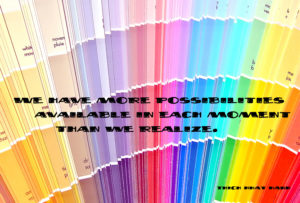
Office Treasures
What kinds of useful treasures do you keep in your office?
Aside from the boring box of things-I-might-need-or-have-forgotten-at-home (headphones for ADHD assessment, bandaids for strange emergencies, deodorant because I’m sometimes in a rush, etc.), I have a box in my office of useful treasures that I pull out in therapy sometimes. It has mostly been populated because I really wished I had something in session and didn’t! I thought I’d share a few of those items with you:
- Heart rate monitors
- I keep two inexpensive heart rate monitors (the kinds that clip gently on clients’ index fingers) in my office, along with extra batteries. I use these in the Gottman way, when couples have a tendency to escalate (to help them see when they need a time out) and I also use them with individuals sometimes when we’re learning relaxation techniques
- Copies of therapy-pics I’ve made
- I like to make “take homes” for clients using stock photography, either for use in session exercises or to reinforce special ideas. I try to keep a few copies of my favorites so that I have them available and can send them home with clients
- Bubbles
- I use the small tubes of bubbles that are popular as kids party favors. That way it’s easy for them to be single use. The primary way I use these is to teach unpanicked breathing. Attempting to blow one large or many little bubbles is an easy way to get across the basic principle of “exhale longer than you inhale,” and clients seem to like the interactive nature of the activity. I also occasionally have couples use them when they need to discuss conflict calmly. And they’re part of my “emergency protocol” when an adult has brought a kid to session with them who I wasn’t expecting!
- Small flag
- I keep small plastic flags (the 10 for a dollar kind) in my office to use mostly when I am doing communication training with couples. After we’ve talked about whichever “rules” we are working on, I literally wave the flag when the rule gets broken. It makes for less of an interruption than actually interrupting, and clients seem to feel less “criticized.” (If I have a really high functioning couple, I may send them home with two flags to use during homework practice!) I will occasionally do the same thing with an individual, if we’re monitoring something together (e.g., yes-buts, self deprecation)
- 8” inflatable beach balls
- They take up almost no space, and (along with also being good for visiting kids), I like to use them with couples and individual trauma clients in the Bessel Van Der Kolk kind of way – creating a reciprocal, socially engaged, dynamic-yet-predictable interaction that can help to regulate the nervous system! Also, it can give clients a way to do a semi-dissociation while they talk about difficult things, kind of like how they do their best processing while knitting or petting a therapy dog. They’re the perfect size the be easy to throw and catch, even for not-very-coordinated people, but not so big that they take over the space.
- Blank paper
- I know, this sounds so ridiculously simple, but this is hands down the item I use most often. There are many times that I want a client to make a quick sketch, or co-create a visual metaphor with a client, or draw an explanatory diagram. I never know when that urge is going to pop up, and I really like not having to use the back of their progress note or the regular lined paper I keep I around, and not even having to get out of the chair and break the mood.
Comment: What do you keep in your office to use during therapy? Tell us how it works!



